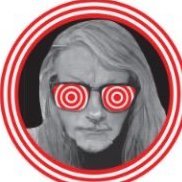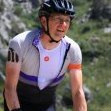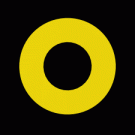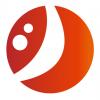-
Posts
6,949 -
Joined
Contact Methods
-
Website URL
loukash.com
Profile Information
-
Gender
Not Telling
-
Location
Europe
-
Member Title
Lukáš
Recent Profile Visitors
19,862 profile views
-
 Great Big Bite reacted to a post in a topic:
extremelly beginner-unfriendly software
Great Big Bite reacted to a post in a topic:
extremelly beginner-unfriendly software
-
 user_0815 reacted to a post in a topic:
extremelly beginner-unfriendly software
user_0815 reacted to a post in a topic:
extremelly beginner-unfriendly software
-
 Dazmondo77 reacted to a post in a topic:
extremelly beginner-unfriendly software
Dazmondo77 reacted to a post in a topic:
extremelly beginner-unfriendly software
-
 Old Bruce reacted to a post in a topic:
extremelly beginner-unfriendly software
Old Bruce reacted to a post in a topic:
extremelly beginner-unfriendly software
-
 loukash reacted to a post in a topic:
I need a Lightroom replacement, what are you guys using?
loukash reacted to a post in a topic:
I need a Lightroom replacement, what are you guys using?
-
 Komatös reacted to a post in a topic:
extremelly beginner-unfriendly software
Komatös reacted to a post in a topic:
extremelly beginner-unfriendly software
-
 MmmMaarten reacted to a post in a topic:
extremelly beginner-unfriendly software
MmmMaarten reacted to a post in a topic:
extremelly beginner-unfriendly software
-
 MmmMaarten reacted to a post in a topic:
extremelly beginner-unfriendly software
MmmMaarten reacted to a post in a topic:
extremelly beginner-unfriendly software
-
 Alfred reacted to a post in a topic:
extremelly beginner-unfriendly software
Alfred reacted to a post in a topic:
extremelly beginner-unfriendly software
-
 PaulEC reacted to a post in a topic:
extremelly beginner-unfriendly software
PaulEC reacted to a post in a topic:
extremelly beginner-unfriendly software
-
My apologies for omitting the [sarcasm][/sarcasm] tags. If I would travel all the way back in time, I have been also "indoctrinated" by Aldus PageMaker, Aldus FreeHand, QuarkXPress et al before even entering the Adobeverse. It always takes time to make a switch from a tool you were able to handle in your sleep. There was a time about 30 years ago when I knew QXP v3 and v4 inside out, off the top of my head. Everything. Some of my custom keyboard shortcuts in Affinity are still based on that.
-
 bbrother reacted to a post in a topic:
extremelly beginner-unfriendly software
bbrother reacted to a post in a topic:
extremelly beginner-unfriendly software
-
Well, some of us Affinity users (like yours truly) have even wasted years at art schools to learn the basics of graphic design first. Or, some others (also like yours truly) have been so indoctrinated for decades by the Ubiquitous Adobe Cult that it took them another few years to switch their mindset to fully understand what they're now dealing with as Affinity users. (Spoiler: it worked out fine for me ) In other words: Take your time. Be patient. Also, please don't be rude on the forum to "make a point". If only there were a trial version of Affinity to check everything out before the purchase… Oh, wait! https://affinity.serif.com/trial
-
 loukash reacted to a post in a topic:
Introduce Yourself
loukash reacted to a post in a topic:
Introduce Yourself
-
 loukash reacted to a post in a topic:
Too quiet …
loukash reacted to a post in a topic:
Too quiet …
-
 loukash reacted to a post in a topic:
Translation to Czech
loukash reacted to a post in a topic:
Translation to Czech
-
This would be certainly very odd. For me, it saves the intermediate scan into a /private/var/folders/(…) subdirectory which is for temporary files. That's on MacOS Ventura. Haven't tried on newer OS though. I don't think so. I'm the owner, too. That said, I vaguely remember having seen similar behavior before as well. But I don't remember in which context it was or if it was with Affinity or another app. Some 3rd party apps can definitely get confused by the MacOS "app package" concept and treat them as regular folders.
-
 loukash reacted to a post in a topic:
Scanning errors in Affinity Photo
loukash reacted to a post in a topic:
Scanning errors in Affinity Photo
-
You must be a genuinely lucky person if you perceive this as "real pain"… Place the Image Capture app in your Dock and then: Because clicking an existing icon in your Dock will cause you about as much "pain" as navigating to the File menu in APh and selecting the "Acquire Image" menu item anyway. Then follow the setup procedure I've linked to. If you don't want Image Capture to live in your Dock, set it up like this: This complete workflow can be run by a few keyboard shortcuts. To set it all up will take you a one-time investment of a few minutes which will be worthwhile if you…
-
Even better than Dropbox: pCloud allows you to select any individual local folders and link/sync them to any individual folders on pCloud. Whereas the virtual pCloud Drive is more or less a "bonus" for adding even more folders and files that you explicitly don't want to store and sync locally. But given it's a virtual drive, they are in fact stored locally as well, albeit hidden (on Mac) in the ~/.pcloud/Cache/cached disk image. At least that's how I use it. It's a very flexible concept.
-
 loukash reacted to a post in a topic:
Does the Serif development team still exist?
loukash reacted to a post in a topic:
Does the Serif development team still exist?
-
 loukash reacted to a post in a topic:
Does the Serif development team still exist?
loukash reacted to a post in a topic:
Does the Serif development team still exist?
-
 loukash reacted to a post in a topic:
Discussion on Affinity development (split from 2.6.3 announcement)
loukash reacted to a post in a topic:
Discussion on Affinity development (split from 2.6.3 announcement)
-

Does the Serif development team still exist?
loukash replied to JpLaf's topic in Desktop Questions (macOS and Windows)
Of course "it isn't" because you've just made this up. Please learn to quote properly rather than spreading misinformation. ^ emphasis mine. I, for one, am not a "professional photographer", but I surely am a "creative professional". And so are allegedly millions *) of other Affinity users. Vive la grande différence. *) Disclaimer: That all said, I'd also take the "millions" claim with at least a small grain of salt. A few years ago it's been publicly reported that there were at least 3 millions Affinity licenses sold, but how many "millions" of them actually are "creative professionals" remains anyone's guess. But that's how marketing works in general. -
You're in Designer, so you have activated the Vector Crop Tool. This will crop single objects, not the canvas. It has no adjustable attributes in the context toolbar. Confusingly, the Vector Crop Tool uses the same icon as the canvas Crop Tool in Photo. Duh. The Vector Crop Tool does basically the same thing as if you simply nest objects inside a plain rectangle shape. Nothing more. (For the record, I haven't ever used it since I got Designer some 10 years ago… ) In other words: User error, not a "bug"…
-
 loukash reacted to a post in a topic:
Affinity Photo Tutorial - Improve brightness differences in night shots
loukash reacted to a post in a topic:
Affinity Photo Tutorial - Improve brightness differences in night shots







